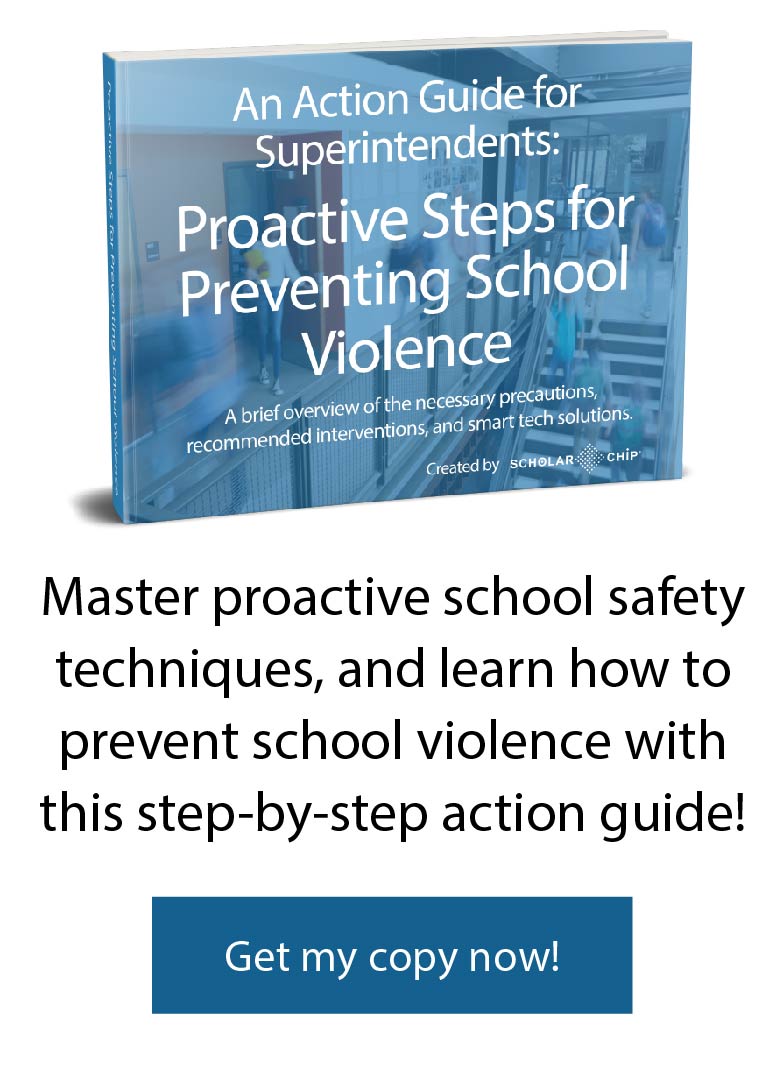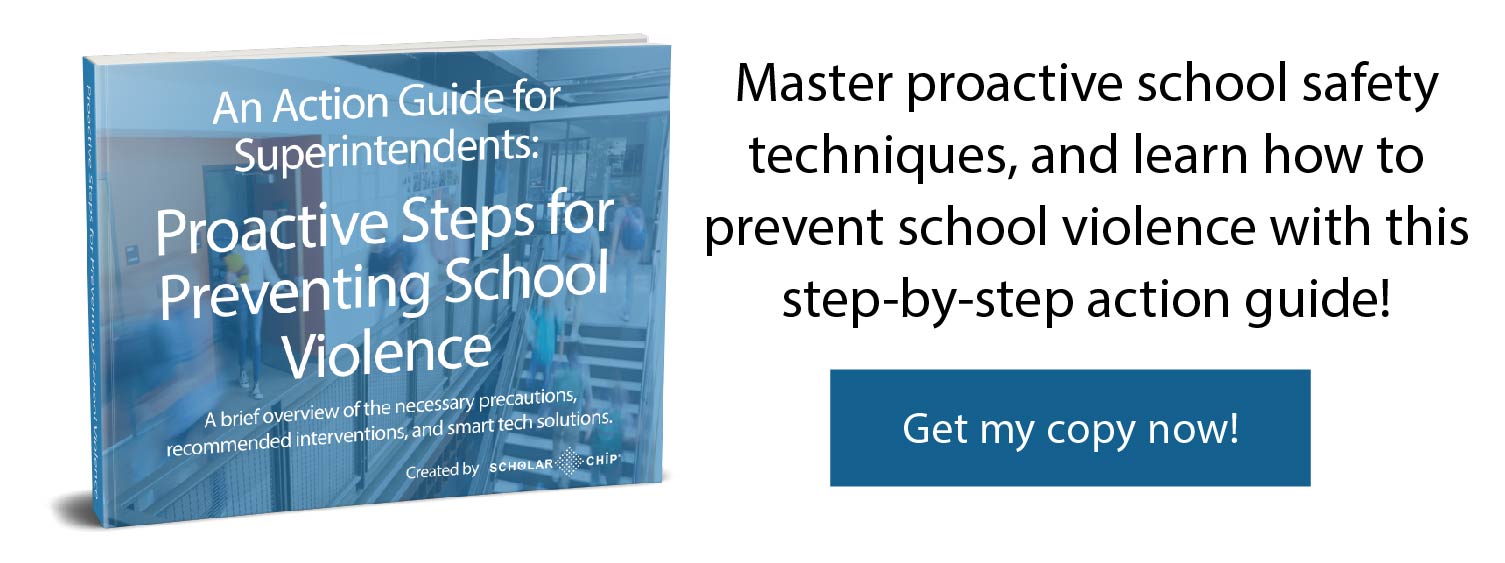When faced with a threat, the human body’s natural response is to jolt itself into action with a mega dose of adrenaline. Finesse and details tend to go out the window during moments like this; but the key to an effective school threat response is to keep a level head and take practical actions. It is up to you to make sound choices, keep your students and staff safe, and help police find the person or people responsible for the threat.
One of the first things school superintendents should do when the school receives a threat is to take a look at which students are absent from school that day. We are not implying that all school threats are lodged by absent students. However, administrators should treat their list of absent students as one starting point for identifying the culprit. How well could your leadership team assess the potential threat level for each of those absent students? There are ways to make that job much easier. Here’s how to make sense of school threats when a student is absent from school.
School Threats are Increasing
A study conducted by the Educator’s School Safety Network shows that school threats rose 62% from 2016-17 to 2017-18. Amy Klinger is the director of programs for the organization, and she stated, “We’re waiting until things are so bad that we have a perpetrator with a gun before we do something,” Klinger said. “If they (teachers) do have training, it’s in active shooter response. It’s not in violence prevention, threat-assessment or being able to identify and intervene with individuals of concern.” The gap lies with identification methods. If you can’t predict who might make a threat in the future, you cannot implement early interventions to prevent the threat or violent action from happening.
Early Intervention is a Critical Missing Piece
How can counselors, principals, and the police determine which students might be responsible for a school threat? The National School Safety and Security Services organization echoes Ms. Klinger’s statement. “Early intervention to prevent violent incidents is complicated further because so many people have pieces of information about a child. The pieces are rarely put together to get the whole picture until after a crisis occurs.”
Educators attend so many meetings and complete piles of paperwork every year, yet they are not equipped to put their pieces together to identify emerging threats. It may feel wrong to ask teachers to fill out even more forms to track “hunches” they have about students, but this must become part of every teacher’s routine. School safety depends on it. But all these notes have to be stored in a centralized location for all authorized staff to share.
Attendance Records Before and During an Attack
In addition to early intervention, accurate attendance records are critical before and during an on-campus emergency. We ask a lot of teachers during lockdowns: they have to keep their class safe and silent during perhaps the most stressful moments of their life. They have to remember who was absent from school that day. They have to recall whether any students left the classroom before the lockdown was called. But those attendance records are critical to helping administrators and police make informed decisions during an emergency.
Students who attack their schools tend to go through a period of confirming their commitment to going through with their plan. These students may or may not skip school one or more days leading up to the day they issue the threat. Reviewing records for truancy patterns leading up to an attack could provide clues leading to the person responsible. An automated attendance system, such as smart ID cards and readers would reduce human error and allow teachers to focus on keeping their students safe during an emergency. Also holding students accountable for their own attendance.
Automated Attendance and Early Intervention Solutions
One would think that in the aftermath of an event like the Parkland school shooting in February 2018, threats of school violence would drop as the entire nation takes stock. But, in fact, the opposite was true. It is up to students, parents, and educators to keep campuses safe. ScholarChip can help. Our Behavior Intervention and automated attendance tools are just two ways we allow schools to identify early threats and stay prepared for students who exhibit specific behaviors that lead to further violence.
ScholarChip-ABE
Schools cannot afford to wait and react to students that might exhibit issue on campus. To keep schools safe, leadership must be proactive. Teachers must share their concerns about individual students in an honest but confidential manner. The ScholarChip Alternative Behavior Educator (ABE) tool provides school staff with one central location for all student-related observations and concerns. A staff member – potentially a school counselor or principal – must be responsible for reviewing these records and calling meetings to discuss students of concern before a tragedy strikes. This is the only way schools will be able to keep themselves safe and stop school attacks from happening.
Automated Attendance Tools
Implementing an automated attendance system alleviates mundane tasks for teachers and office staff alike. With an automated system, each student will be issued a smart ID card with a microchip inside it. When the student arrives in class, they tap their smart ID card on a card reader at the classroom door. And just like that, the student is marked present for class. If the student taps their card late, they are marked tardy. The teacher doesn’t have to spend the first five minutes of class dealing with attendance-taking, which adds 25 precious instructional minutes to each class every week.
When students arrive at school late, the office staff doesn’t have to issue handwritten tardy passes to each student, which gets kids to the class that much faster. If a student has to leave campus early for an appointment or illness, their card scan is recorded in the system and their absence is automatically noted. Parents will also be notified if their student is late or missing school.
During a school emergency, administrators can instantly generate attendance reports to see exactly which students are on campus at that moment. This information is critical to making sure all present students are accounted for. It allows teachers to focus on keeping their students safe. And this information, combined with reports from ScholarChip-ABE, can provide administrators, superintendents, and police critical clues as to who might be responsible for issuing the threat.
ScholarChip Is Your Partner in Campus Security
ScholarChip is an all-in-one, platform solution to help reduce school threats and address the important issues surrounding school safety. Data from students, faculty, and stakeholders are leveraged to manage school access, attendance, and behavior management through the platform tools to increase safety and promote the campus climate schools are looking for.
If you would like to find out more information on how you can reduce students absences while securing your campus, feel free to reach out to ScholarChip today for a 1-on-1 strategy session with one of our solution specialists!


